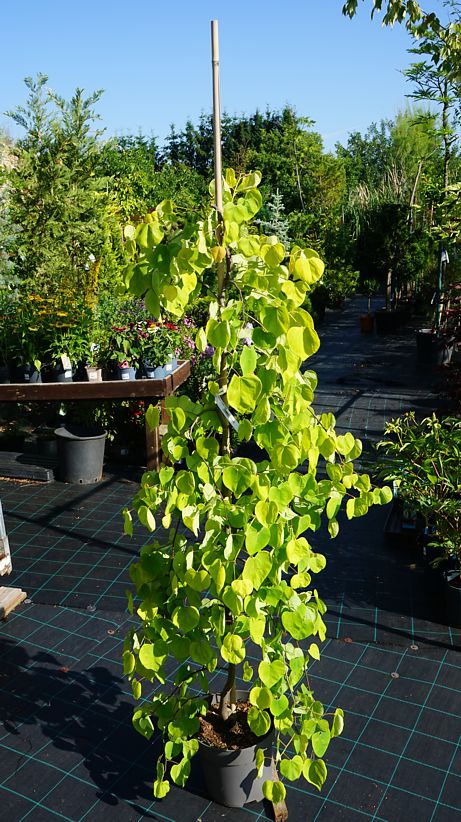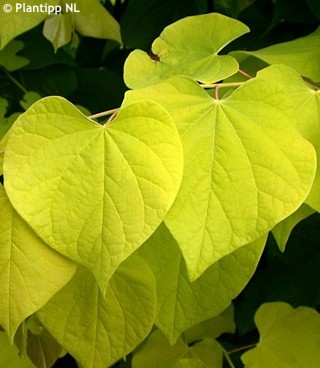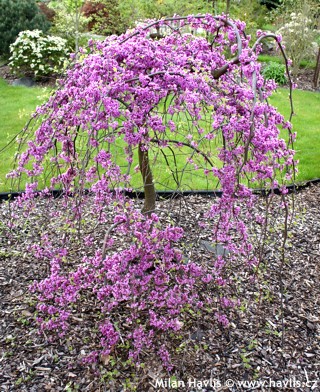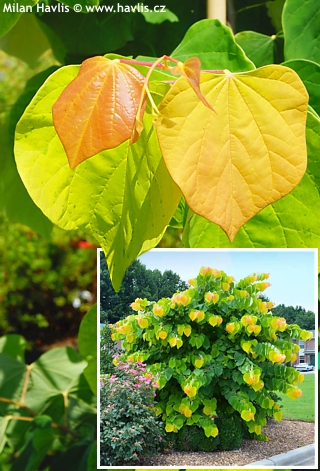Cercis canadensis ‚NC2015-12‘ GOLDEN FALLS® eastern redbud
Cercis
Eastern Redbud is a deciduous shrub or small tree native to the eastern part of North America — from southern Michigan through Texas and down into Mexico. A member of the legume family (Fabaceae), it was first botanically described by Carl Linnaeus in 1753. Its distinctive flowers, which appear in early spring on bare wood, earned it popularity as an ornamental plant already in colonial times — for instance, Thomas Jefferson, the third President of the United States, principal author of the Declaration of Independence (1776), and an avid gardener, planted it in his gardens at Monticello. The species was introduced to Europe in the 18th century, and due to its adaptability, it performs well even in Central European gardens. Thanks to its ability to fix nitrogen in the soil and tolerate a variety of site conditions, it’s also suitable for urban plantings and naturalistic designs. In contrast to the Mediterranean Cercis siliquastrum, which is more cold-sensitive, C. canadensis boasts higher hardiness (USDA zone 5), a broader range of cultivars, and better vigor in continental climates. And with new cultivars sporting flamboyant foliage, it keeps surprising us — so there's a perfect one for every garden.
The redbud breeding program at North Carolina State University
Dennis James Werner, a distinguished professor of horticulture at North Carolina State University in North Carolina, USA, is a breeder known for his work with butterfly bushes, peaches, and redbuds. In the latter, he has successfully developed and patented eight stunning cultivars — among the best known are the dark-leaved ‘Merlot’, the weeping ‘Ruby Falls’, the pink-toned sweetheart ‘Carolina Sweetheart’, and of course the wildly popular Eternal Flame (marketed in the U.S. as Flame Thrower®), which won the Plant of the Year award at the prestigious Chelsea Flower Show in 2021.
Golden Falls® eastern redbud from 2020 simply continues a successful line of these trees with attractive foliage.
It was developed by Werner by crossing the weeping ‘Lavender Twist’® with the golden-leaved ‘Hearts of Gold’. The result is an elegant tree with a narrow, cascading habit and radiant yellow foliage that resembles a stream of sunlight. In spring, the leaves emerge in a bright yellow; by early summer, the new growth turns a rich golden to light orange, while the maturing inner leaves shift to chartreuse. In autumn, the green fades entirely and warm shades of yellow and gold return. They are deciduous, broadly heart-shaped, and typically 7–10 cm wide. In early spring, before any foliage emerges, small, bright pink, pea-like flowers appear directly on the bare branches. The cultivar was granted U.S. Plant Patent no. PP31,658.
Since Golden Falls® is a weeping form, its final height depends largely on how it's trained. It is often sold either already grafted at 125–200 cm or as a low-grafted plant trained upward along a bamboo stake or other support. Without further tying and guidance, it will naturally begin to arch downward forming a shimmering cascade of yellow foliage. Without additional training, it will stop gaining height and gracefully weep from the point where the last tie was placed. This habit lends itself beautifully to brightening up darker garden corners or contrasting with richly colored shrubs and taller perennials. It also makes a striking focal point in small front gardens — especially when paired with a decorative stone and mulched with premium dark brown bark, such as pine mulch, for added texture and visual depth.
Weeping redbuds are slow-growing and require little pruning. Still, you may trim and shape them while their branches are young and flexible — older, thicker wood doesn’t respond well to pruning and is more susceptible to disease. Cercis canadensis is not demanding when it comes to soil, but thrives in moist, well-drained ground. It prefers full sun, though young plants benefit from protection against intense spring sunlight and drying winter winds. It dislikes being transplanted. Fully hardy to about −29 °C (USDA zone 5), though even greater resilience is expected. In recent years, we’ve observed that variegated redbud cultivars sometimes suffer from sun scorch on their young leaves due to elevated UV radiation during periods when the Czech Republic lies beneath the thinnest part of the ozone layer. The cause is a lack of protective chlorophyll — the green pigment in leaves that functions much like sunscreen with a high UV factor. Affected leaves tend to wilt, dry up, and fall off, but they are quickly replaced by fresh new growth. No intervention is usually necessary — perhaps just light feeding with liquid fertilizer and a bit of patience 😊.
Last update 29-08-2023
Goods are shipped all over Europe. For Russia and U.K. and for further details please read about SHIPPING OPTIONS HERE.
Are you interested in a serious discount for orders NOV-FEB? Check your options here.
THE PRICES INCLUDE VAT of 15%. For quick conversion you can use 1 CZK = approx. 0.04 EUR
- STANDARD QUALITY - Plants of this group are 1st class quality with number of branches and overall density adequate to their size and age, considering they were container grown.
- DE LUXE QUALITY - This label guarantees a luxurious quality of manually selected plants that, compared to their height and age, are exceptionally dense and beautiful.
- EXTRA - These plants are usually mature and bigger specimens with exceptional overall appearance.
- STANDARD (as described in the plant form) means a tree with a trunk of 190-210 cm and a crown at the top, unless specified differently. The commercial size for trees is their girth measured in the height of 1m from ground.
- HOBBY - These plants are of the same quality as our standard-quality plants but younger and therefore cheaper.
- SHRUB - a woody plant with branches growing bushy from the ground level.
- HALF-STANDARD or MINI-STANDARD - a small tree with shorter trunk, its size is usually specified.
- FEATHERED - These are trees with branches growing already from the base of the trunk and up along the stem.
- GRASSES and PERENNIALS - Sizes given usually read the diameter of the pot or the clump, as specified.












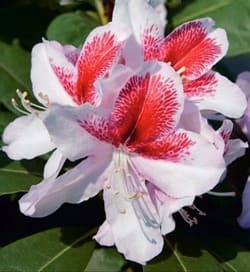










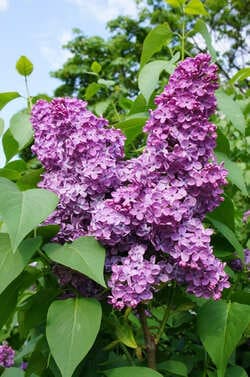

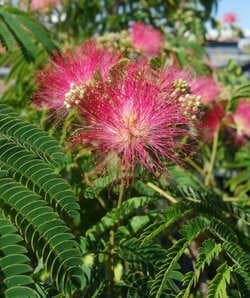




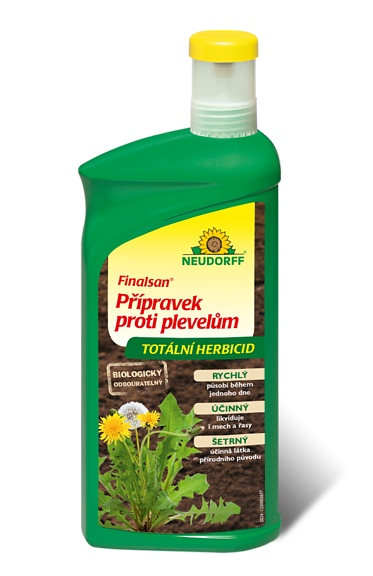


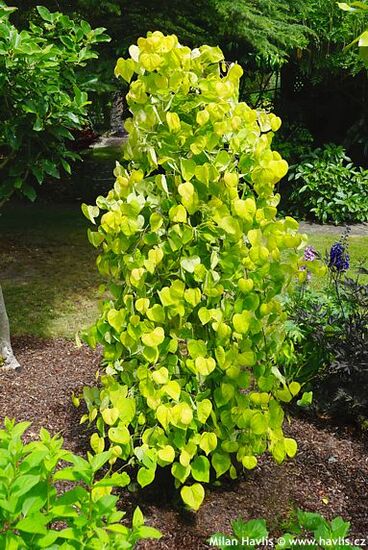
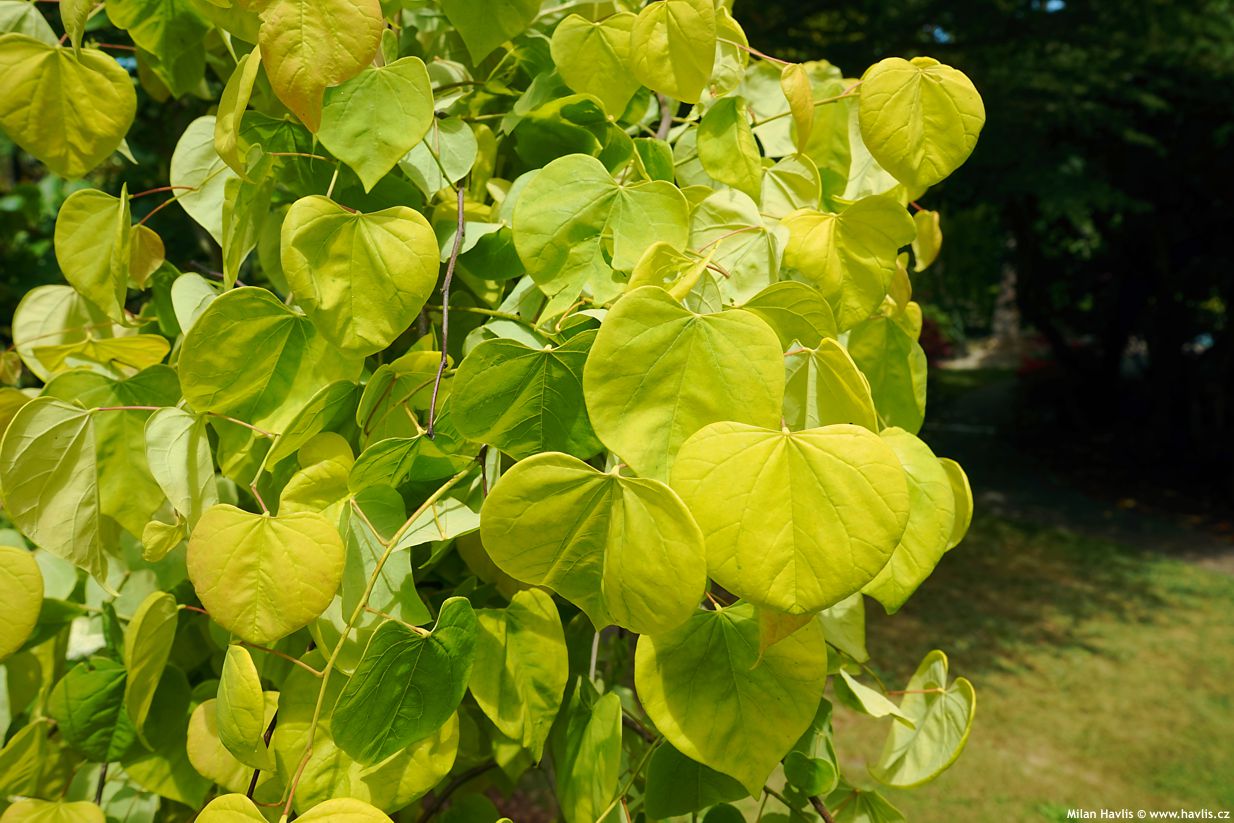
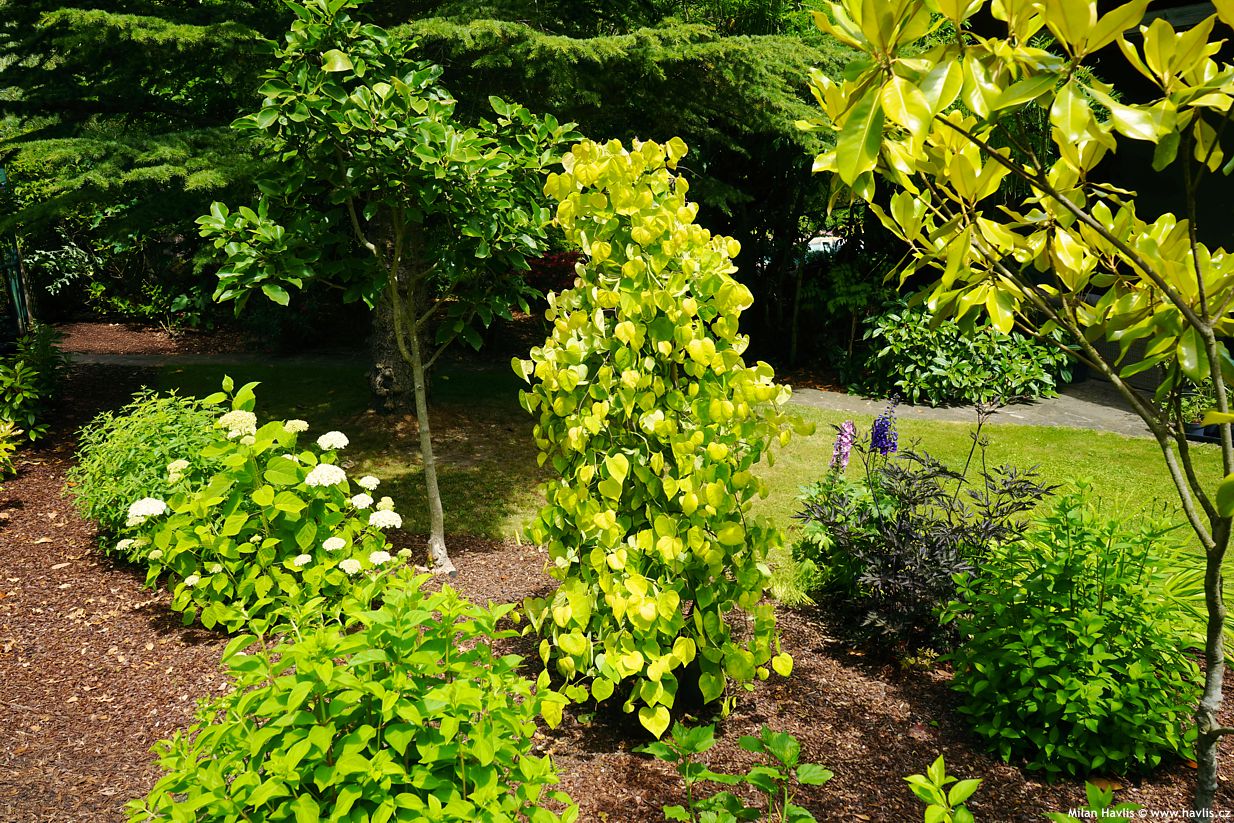
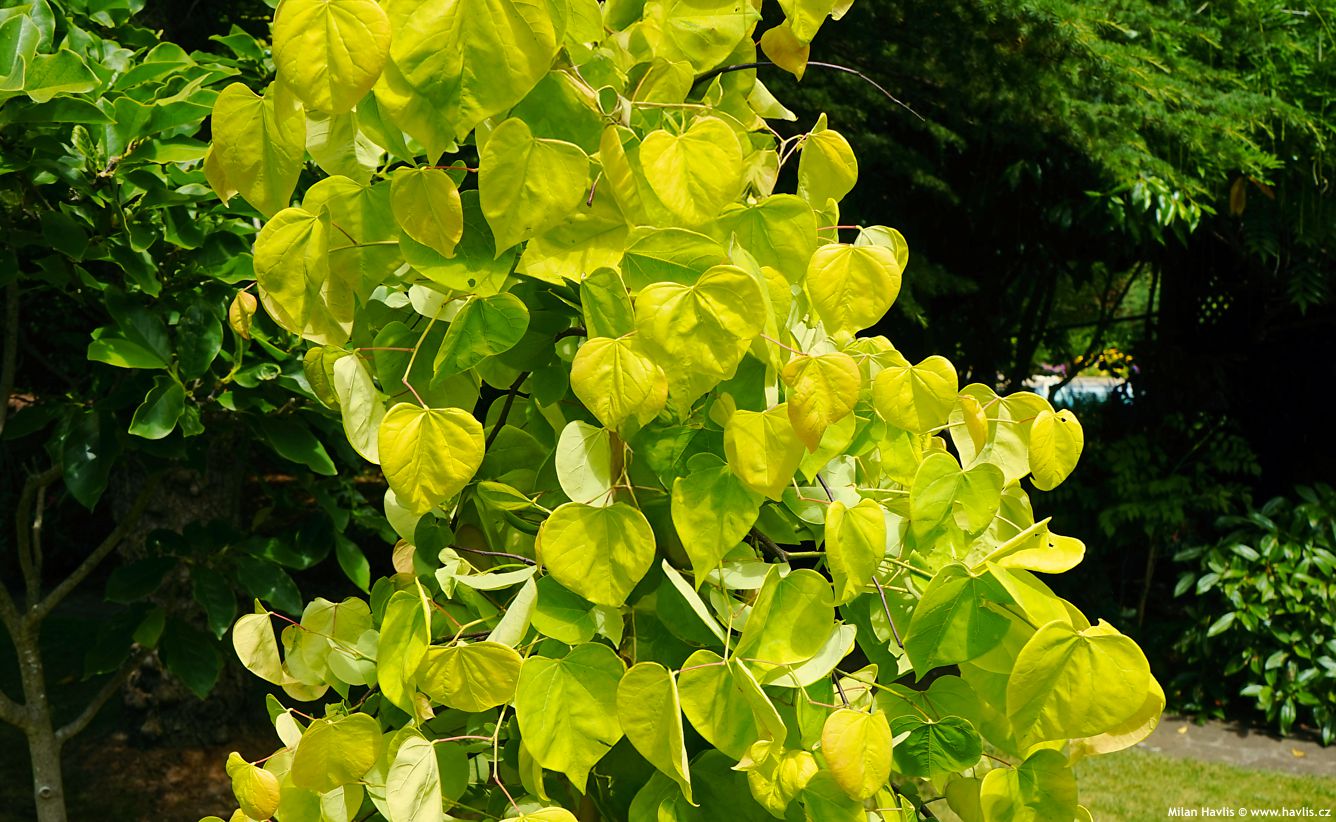
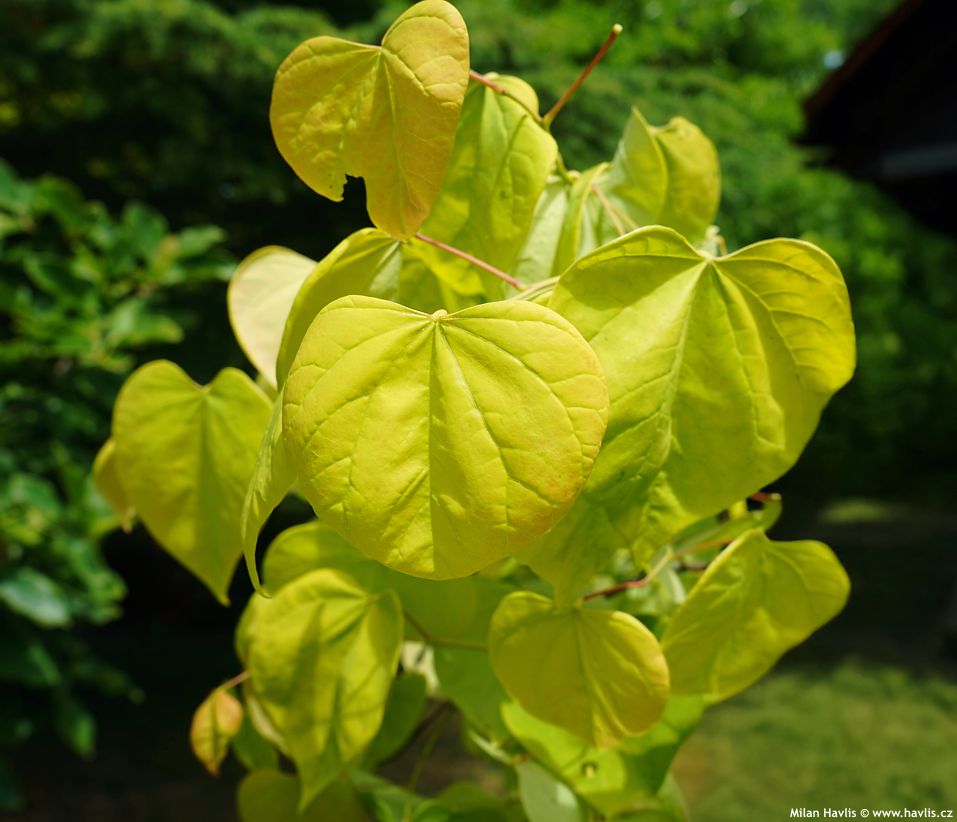
.jpg)

